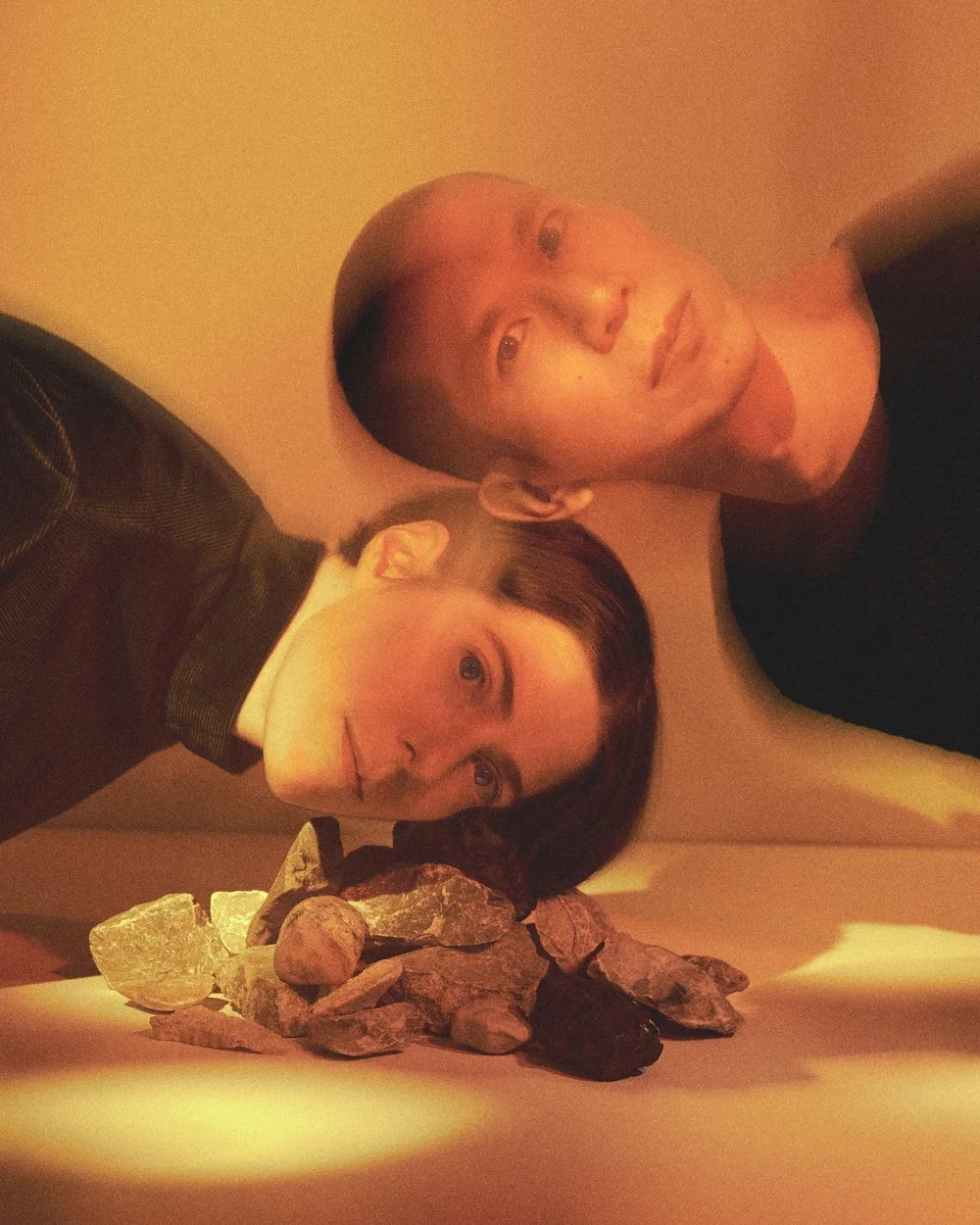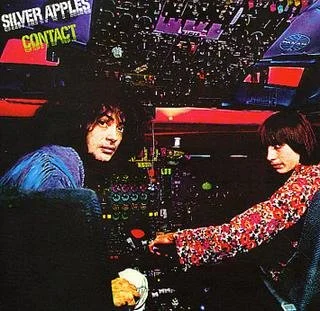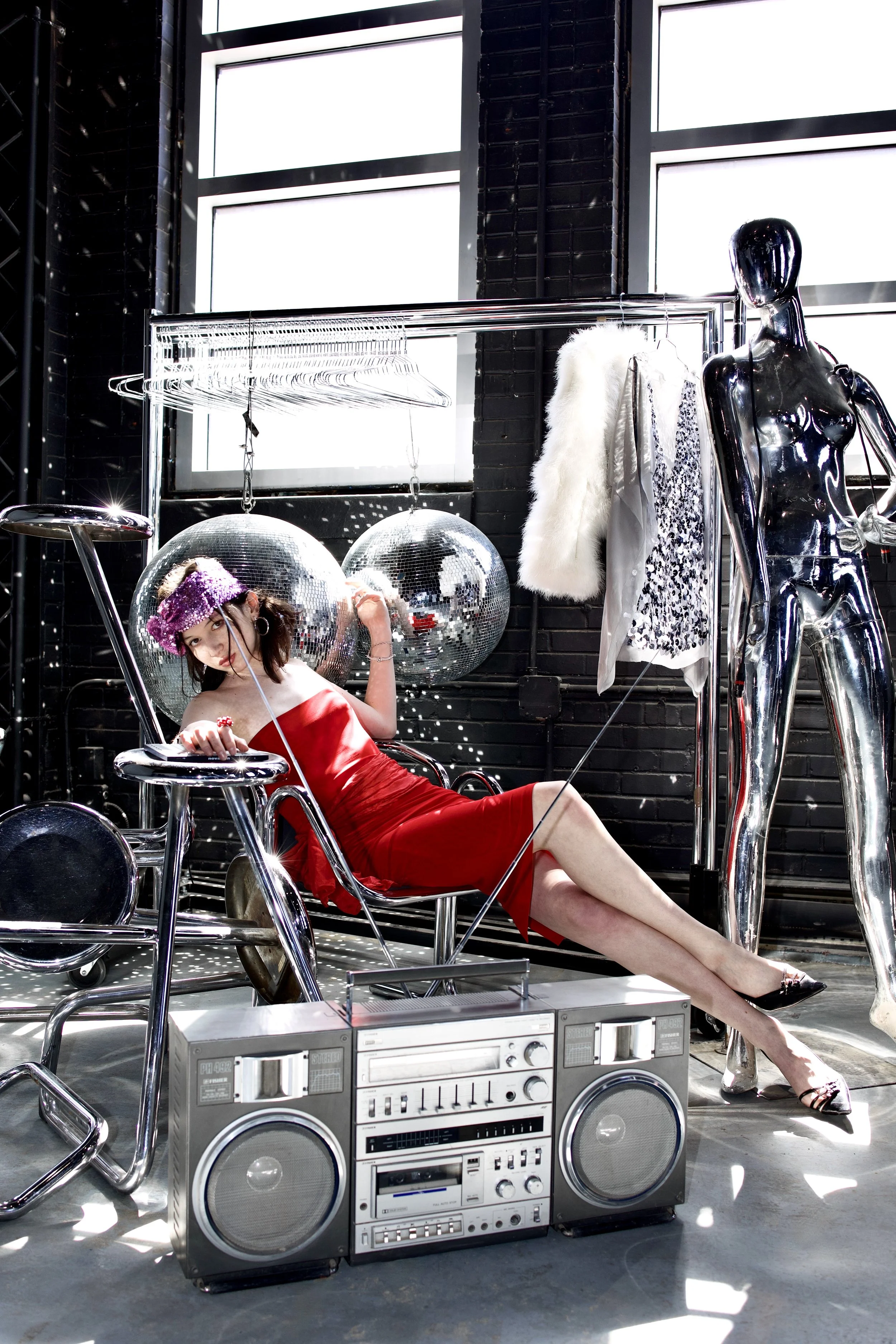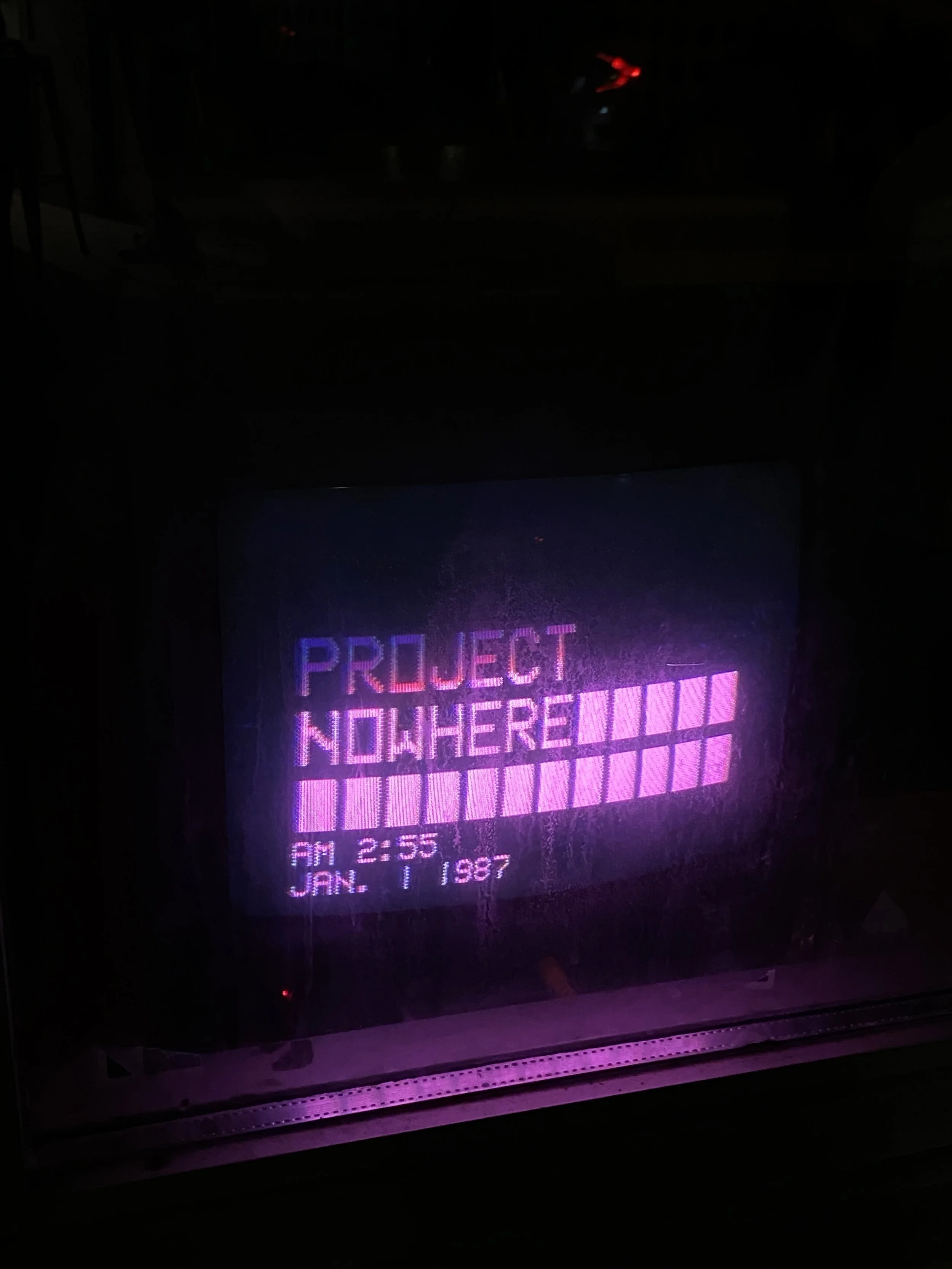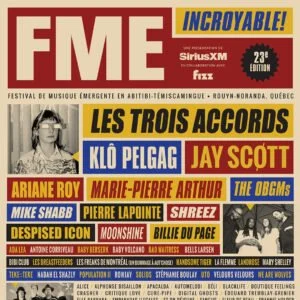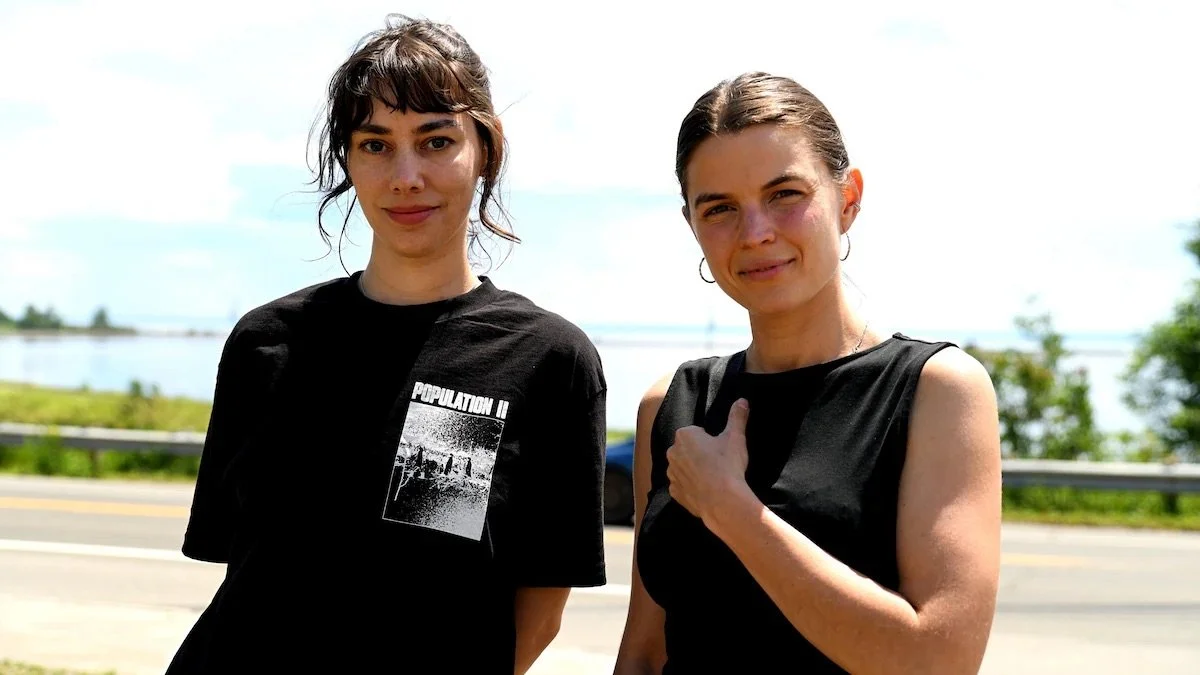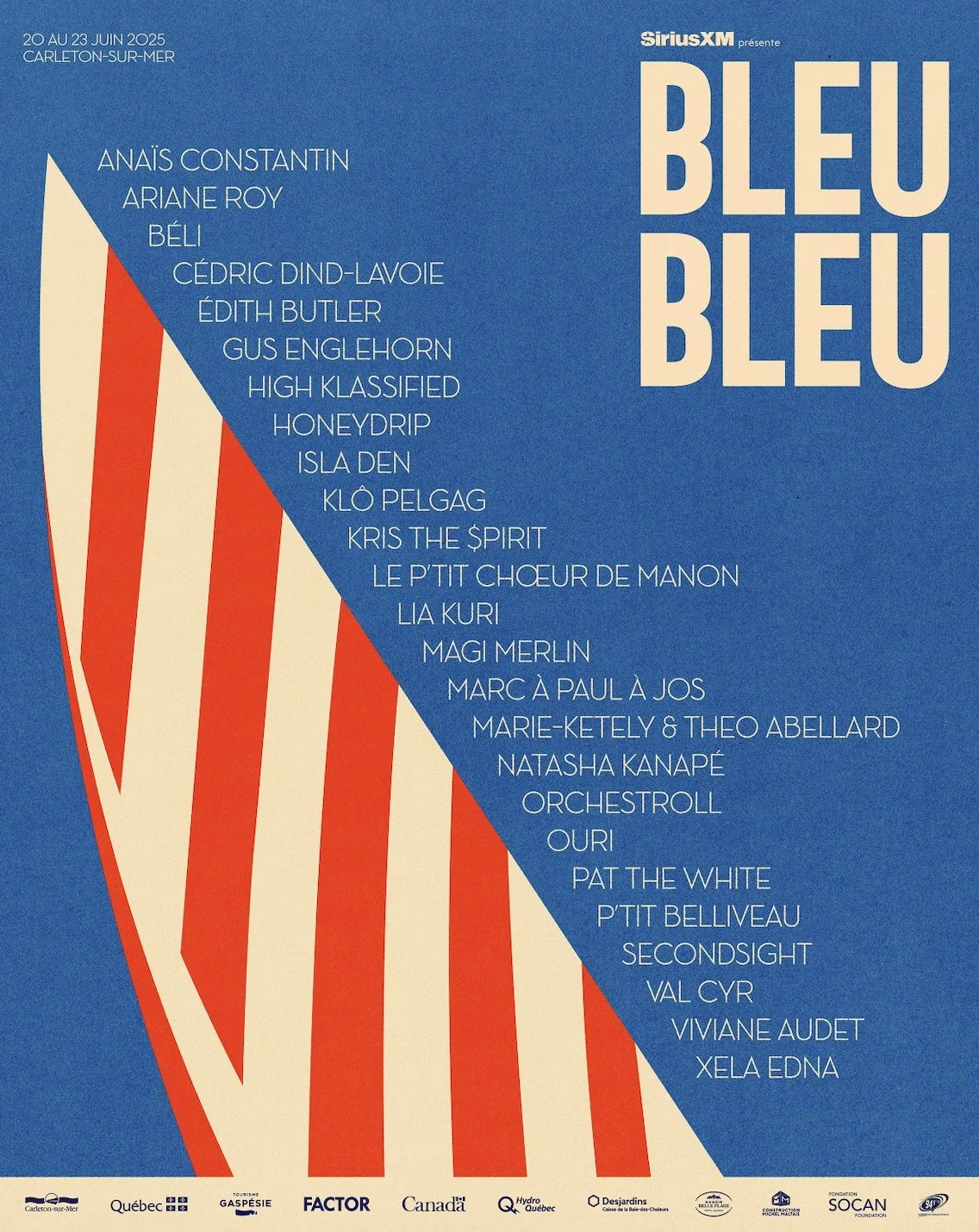Mue On Ritual, Intimate Spaces, and Decomposition in LP "Les vasières" (Halocline Trance)
Mue by Vincent Castonguay
Explore the esoteric and terrestrial that is embodied in Mue’s first full-length new album, Les vasières. Even though the electronic duo—made up of Léon Lo and Catherine Debard—is based in Montreal, the sonic perimeters of Les vasières are vast, spanning across complex layers of sound and space.
Elaborating on the landscape of their latest release, the band explains: “The French album title translates to “The mudflats.” Sounds from disparate sources form aural silt that is brought to life by waxing and waning cycles, each improvisation presenting a new, different mudflat scenario.”
By incorporating the sound of water, nature, and compost, Mue presents more than an album but an auditory experience through their experimental rhythms and alternative percussions. In this conversation with Mue, Liza Makarova mediates the intimacy of Mue’s spontaneous-yet-methodical approach to their world-building and soundscaping process.
Les vasières by Mue. Cover artwork by Katherine Melançon, graphic design by Haley Parker
Liza Makarova of Also Cool Mag: What is the history behind Mue? When did it start and why?
Catherine Debard of Mue: Mue is definitely a pandemic project. It [all began]in March 2020 – I was supposed to go on a European tour and had sublet my place. A few days before leaving, I started having doubts and ended up cancelling everything (which was a really good decision, since the international lockdown happened the week after). I stayed at Léon's place and we quarantined together.
Léon Lo of Mue: I had some gear stocked at home from a previous performance, so one day, out of boredom or curiosity, we decided to jam together for the first time. I set up my computer to record it just in case and it turned out to be unlike anything either of us had done individually before.
Liza: Throughout the three- (or more) year process, what were the feelings, sources of inspiration, rituals, and expectations that motivated you to develop Les vasières?
Catherine: Looking back on the recording process, the ritualistic aspect was undeniable. I think the pacing was important in this respect. We recorded a song or two at a time, a few weeks apart, for a few months. Each time, we would clear the space and since our project is hardware-heavy, it would take us about an hour to set everything up. It was meticulous and messy as if we were building a world out of a bunch of cables and machines, all intertwined and tangled together. Then, without talking much or planning anything, we improvised until we connected with each other and when the sounds locked, we would record until we felt satisfied. It would always start playfully and chaotically, but then, intuitively, we'd find each other and vibe on the same frequency.
Léon: I would say “frequencies”, as there were so many elements acting of their own accord. It was entrancing but also eerie in how egoless the process was.
Catherine: Somehow, we always intuitively stopped recording at the 12-minute mark, possibly our own sacred time unit. That was the first phase of the project, and we didn't have an album or concept yet.
Léon: After letting those recordings sit for a bit, we revisited them, chose the ones we liked best and set about cutting them down to more digestible formats. That proved to be really difficult because of the overlapping cycles of different lengths. Finding the right spots to cut out without it showing too much was challenging. But at that point, there was a feeling that the compositions could become something more concrete –that together, they could turn into something else. Kris from La Rama was an early supporter and singled out two songs (“1,000 Passages” and “A Tangle of Filaments”) to release as a limited edition 10” vinyl on the store’s in-house label La Rama Dubs. Toronto-based label Halocline Trance gracefully signed on to release the remaining tracks, which were coalescing into something like an album.
Catherine: It's around that time that we started thinking about mudflats, right? That's what “vasière” means. We added the interludes to expand a bit more on the idea. Before that, I remember we were into more of a “compost”, “slimy” imagery. I was trying to grow plants out of vegetable scraps, and I recall we were both pretty invested in the process.
Léon: Yes, listening to the tracks, we started seeing how our disparate sounds would come together like all the different overlapping cycles present in mudflats: those of the waves, the countless micro-organisms, the vegetation, the birds overhead, etc. So, each jam was re-imagined as us having set up a new mudflat and wanting to see how all the different elements would co-exist.
LM: The album is both transcendent and down to Earth. While utilizing high-frequency vibrations to create an ethereal aura, the title—Les vasières—and the organic rhythms create a grounding sensation. By balancing the abstract and the earthly, where would you “place” the sonic atmosphere?
LL: I think "transcendent" and "down to Earth" are two poles that we reach for. However atmospheric our music may be, we really want it to be a physical experience.
CD: I think a telling example is the kind of field recordings we used in the songs. I had recorded myself playing with rubber bands, pine needles, water... I think these sounds bring everything together in a more physical way, as you were saying.
LL: When you listen to the music and hear these sounds from different sources, you're getting all of their original sonic contexts as well. So, the sounds are actual physical spaces merging and vibrating in your space, and not just ethereal evocations of ideas of space.
CD: Thinking about your question, it made us realize that we both embody a different end of that spectrum. I am very much in my body and my senses, but my contribution to the music is more amorphous, and ungrounded.
LL: Whereas I'm very much in my head most of the time, I contributed the more grounding rhythmic base.
CD: Weird!
LM: Les vasières was recorded on your living room floor. What do “home vibrations” mean to you? What kind of energy is generated while recording in a home studio and how does producing in intimate spaces affect your creative process?
LL: Recording in a small living room with all of our gear felt like a cozy spaceship.
CD: Like the cover of that Silver Apples record, but super chill, and with herbal tea and fruits.
LL: Because we didn't have any plans at the outset, the recordings were intimate moments of exploration. There were no clocks ticking overhead, no pressure to deliver anything specific.
CD: I think it's because the whole thing was so low-key and fun that I made much bolder moves than I would usually. I had the time to dive further into my instruments' menus and settings, which led to more sophisticated, weirder textures. I didn't care about perfection at all, and you can hear that. Also, not using a computer led me to rethink my way of creating loops or to improvise using more than one instrument at a time. It was all quite clumsy but special.
LL: Also, I think it's important to let people know exactly where we worked so that the music doesn't just float around untethered. The context is important because it defined what we could and couldn't do at that specific time. For example, I was a middle-aged, middle-class, cis-het settler of colour lucky to still have a job and some music gear at home.
CD: I was a white settler part-timer in the service industry—temporarily out of work and living out of a suitcase—but still, I was able to get some of my equipment from my place.
LL: We didn't have access to a professional recording studio, and neither were we constrained to just doing everything in Fruity Loops. All this binds the listener back to us at that specific time and avoids creating a purely isolated aesthetic experience.
CD: What I like about working with Léon is that context also becomes a performative, playful and intrinsic aspect of creation. For example, when we started working on our radio show (Heavy Metal Parking Lot, N10as), he had this whole idea of using dice to determine the “energy curve” of each episode. That led us to make adventurous, playful choices that we wouldn't have necessarily made. We could say our live project at Mutek with Katherine Melançon was another example of a both constricting and super-stimulating context.
LM: Many visual and video art pieces, such as the album cover (created by Katherine Melançon and designed by Haley Parker, in addition to Melançon’s music video), were produced in tandem with Les vasières. How do you think the listening experience of “Télophases” changes when paired with the visual component?
LL: The visual aspect of the music video really transforms the listening experience, especially with someone as talented as Katherine. She had run the idea by us of scanning our shared compost and using the resulting images to produce the video for “Télophase”. That sounded awesome, but she mostly kept it a secret until it was done, giving us periodic progress reports along the way. We were totally confident that it would be fantastic, but we were completely unprepared by exactly how fantastic it would be.
CD: When we watched it for the first time, we kept exclaiming throughout the whole thing. We had to watch it a few times in a row to wrap our heads around it.
LL: The images in the video end up taking the lead, in my opinion. They're so strong and the narrative arc is so well-constructed that it could seem like we composed the music to go along with it. That's definitely not a bad thing, and I think it's okay if the music is not experienced the same way as if it was listened to on its own.
CD: As for the album artwork, it offers a very earthy, physical, material palette (food, leftovers, intimate bodily relationships), but made surreal andeerie. The meticulous beauty and the strangeness perfectly set the tone for the record.
LM: To follow-up: in using compost as material for “Télophase”, the binary between decomposition and composition is blurred. Do the song titles and order convey a narrative regarding these themes?
LL: In keeping with the theme of mudflats, we didn't set out to mark any clear beginning or end for the album. We preferred the impression of catching the middle of something, that things were already constantly starting and ending.
CD: Or like if each piece is a glimpse of an ecosystem at a specific time, a fleeting impression of a landscape. As for the song titles, they emerged from an intense research session on various subjects that we felt resonated with the music.
LL: Things, beings, spaces, and the relationships between them.
CD: We followed various rhizomatic associations and jammed intellectually. We looked over the results and named the songs.
LL: Song titles for instrumental music end up acting as super-condensed lyrics, so we tried to choose the most potent words we came across. And about binaries, though they can be useful sometimes, we make it a point to avoid them. A blur is much more interesting to us. Ambiguity rules!
Les vasières
Out November 25, 2022 via Halocline Trance Records
1. Hylozoïste
2. Ambeing
3. Balanes
4. Télophases
5. Quatre Temps
6. 433 Eros
7. Andand
8. Sumac
9. Naica
All pieces composed, produced and recorded by Catherine Debard and Léon Lo
Mastered by East End Mastering
Cover artwork by Katherine Melançon
Graphic design by Haley Parker

